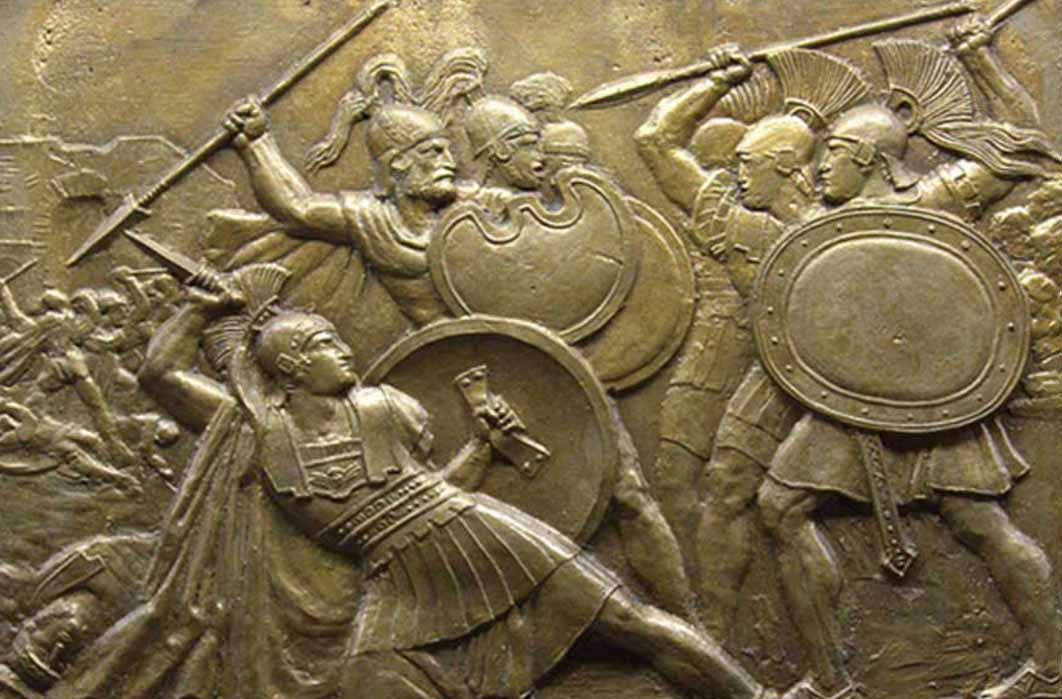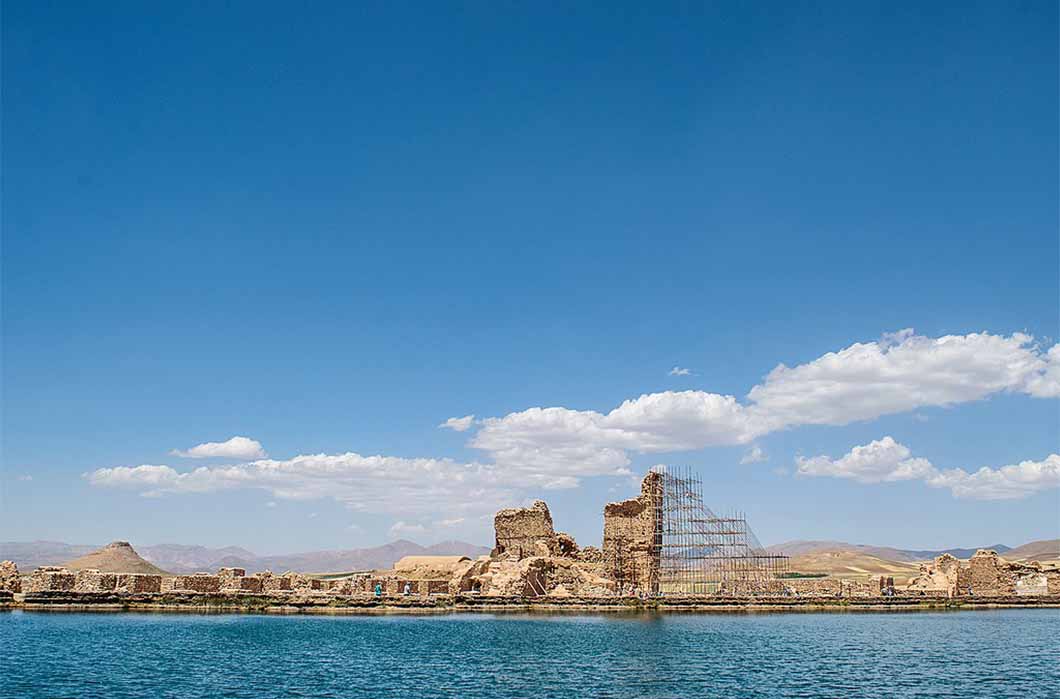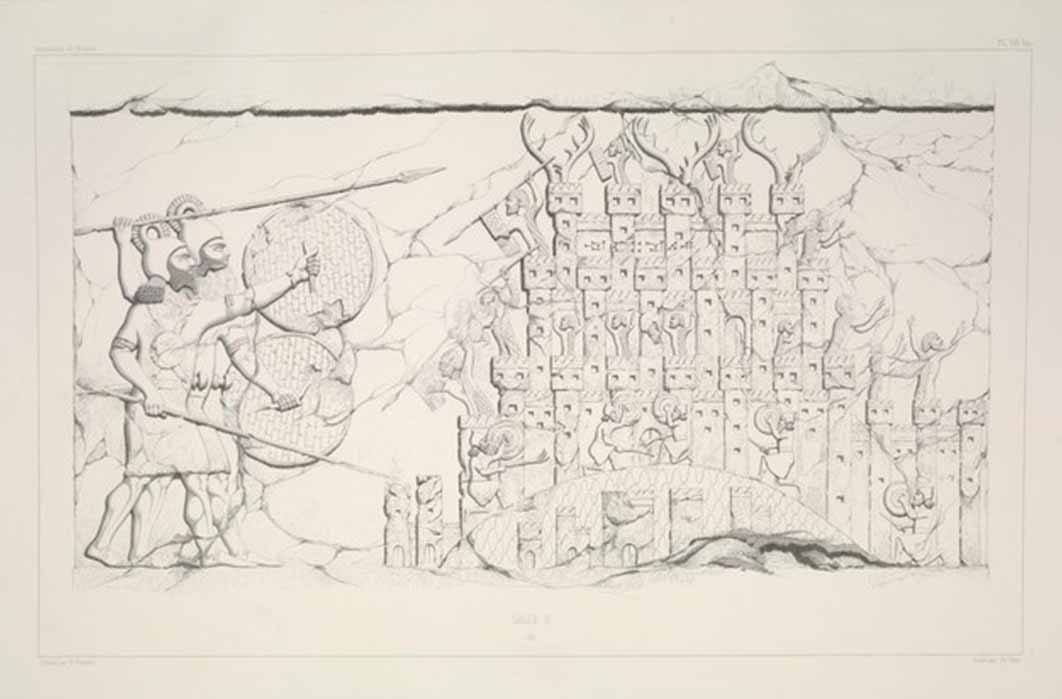
Archaeological Track of Alexander The Great’s Footprint in Persia
Archaeology in modern Iran tracks Alexander the Great’s footprint in ancient Persia as his army crossed the Euphrates, crisscrossed the plateaus, marched along the Royal Road, across the Zagros Mountains, fought three battles at Granicus (334 BC), Issus (333 BC) and Gaugamela (331 BC) and conquered an ancient land with a history stretching back to a time when gods walked the earth.

The ruins of Takht-e Soleyman, where the fire of Adur Gushnasp was stored. (Salar Arkan / CC BY-SA 4.0)
Azr Goshnasb Fire Temple At Takht-e Soleymān
When Alexander conquered Persia, the ancient principles of Zoroastrianism, as believed by Cyrus and his descendants, disseminated through a process of Greco-Persian religious and cultural synthesisation. Yet, during the destruction of Persepolis, Alexander’s troops destroyed many of the Avesta, the Zoroastrianism sacred texts. However, much later under the Sassanid Empire (205 – 651 AD), orthodox Zoroastrianism was revived and developed to have clear distinctions from the practices laid out in the Avesta.
Atashkadeh is the word for fire temples in Farsi, the language of Iran. Zoroastrians do not worship fire, but they view it as a source of divine light, practiced at the Atashkadeh to honor Ahura Mazda, the All-Knowing and All-powerful creator. The fire temple Azr Goshnasb at Lake Oruomieh at Takht -e Soleyman became, by custom, a place of pilgrimage by foot for newly enthroned Sassanid Kings after their coronation and it was frequented by the warrior class, but not by the magi or the common people.
During the Mongol Ilkhanate (1256 – 1335) a summer residence was built by the ruler Abaqa in 1271 on this site, over the ruins of the ancient fire temple. The name Takht-e Soleymān or Throne of Solomon hints, that the origin of this fire temple is enveloped by the smoke of legends and relates that King Solomon used to imprison monsters inside a nearby 100-meter-deep crater which is called Zendan-e Soleyman "Prison of Solomon". Solomon is also said to have created the flowing pond in the fortress complex built on the grassy plain, surrounded by a volcanic mountain region.
Archaeologists speculate that the sacred fire was first taken to the site in the late fourth or early fifth century and the earliest remains built around the ‘bottomless lake’ date to the Achaemenid Empire. The fire temple was sacked in 623/4 by Heraclius during the Byzantine–Sassanian War but the Iranians succeeded in saving the fire, which they later restored to the temple, which was quickly rebuilt.
Ecbatana: Tepe Hagmatana
Ecbatana, situated at the foot of Mount Alvand, was the capitol of the Medes in the seventh century BC. In the fifth century BC, Herodotus wrote of the seven fortified walls of Ecbatana, all in different colours: "The Medes built the city now called Ecbatana, the walls of which are of great size and strength, rising in circles one within the other. The plan of the place is, that each of the walls should out-top the one beyond it by the battlements. The nature of the ground, which is a gentle hill, favors this arrangements in some degree but it is mainly effected by art. The number of the circles is seven, the royal palace and the treasuries standing within the last. The circuit of the outer wall is very nearly the same with that of Athens. On this wall the battlements are white, of the next black, of the third scarlet, of the fourth blue, the fifth orange; all these colours with paint. The last two have their battlements coated respectively with silver and gold. All these fortifications Deioces had caused to be raised for himself and his own palace."
- Alexander the Great Destroyer: Ancient Revenge or War for Profit? – Part II
- The Problem With Labelling Alexander, The Macedonian King With A Mercurial Character
- The Influence of Mythology on the Mind of Alexander the Great
After the conquest of the Medes by the Achaemenid Dynasty, Ecbatana became a summer residence, frequented by Darius I. Just 12 kilometers (7.4 miles) south-west of Hamadan (ancient Ecbatana) at Mount Alvant, Ganjnameh is the rock inscriptions of Darius the Great and Xerxes the Great. The inscriptions read: “A great god is Ahura Mazda, who created this earth, who created yonder heaven, who created men, who created happiness for man, who made Darius king. One king for many, one lord for all. I am Darius, the great king, king of kings, king of countries containing all kinds of men, king in this great earth far and wide, son of Hystaspes, an Achaemenian”





